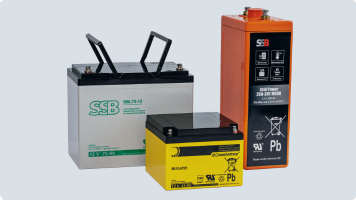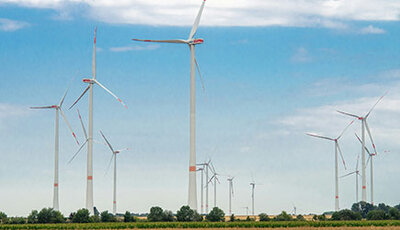As a renewable energy source, wind power plays a central role in achieving climate targets. In order to exploit its potential, it is important that wind turbines are operated as efficiently as possible. Intelligent control systems, now primarily those based on artificial intelligence (AI), help to achieve this. At the Centre for Solar Energy and Hydrogen Research Baden-Württemberg (ZSW), research and development work has been ongoing for years to enable turbines to adapt independently to changing environmental and operating conditions.
With a project called WINSENT, the ZSW is increasingly expanding the application of AI in the field of wind energy research. Various data sources are used for this purpose: satellite information, weather model forecasts, meteorological measurements, and historical and expected energy yields for a location. All of these help with the forecasts. New findings from machine learning are also expected to further increase the accuracy of feed-in forecasts. In addition, the integration of storage systems – such as power-to-gas or battery storage – in the future energy system is to be improved.
Another AI-based project at ZSW is the so-called ‘Birdrecorder’: with the help of AI, birds in the vicinity of wind turbines are recognised by species. When a flock approaches the rotor blades of the wind turbine, the turbine can react automatically, for example by reducing the speed. An innovative project that supports bird protection.
Precise feed-in forecasts for wind turbines
In order to feed as much of the energy generated by wind power into the power grid as possible, reliable forecasts are required for the highly fluctuating energy sources of sun and wind. Such forecasts are also crucial for run-of-river power plants in terms of feed-in and marketing.
The ZSW has been developing feed-in forecasts for wind, solar and hydroelectric power plants for over a decade – in close cooperation with industry, in particular weather services, electricity marketers and municipal utilities. A specially developed operational forecasting system is also used in the GridSage project for Redispatch 2.0.
The ZSW also uses state-of-the-art AI methods to map the complex relationships between weather data, measured values, satellite images and current feed-in data. The systems are trained and tested with extensive historical data sets before being used in daily operations – for forecasts up to 180 hours in advance, and in special cases even up to 384 hours.
Performance monitoring
Due to their complexity, wind turbines should run as smoothly as possible for at least 20 years. Since they are exposed to extreme weather conditions that place high stresses on components such as the rotor, bearings, gearbox and generator, it is important to continuously monitor essential parts. Deviations from normal operation should be detected as early as possible in order to predict the probability of critical faults that could lead to downtime. Modern AI methods are ideal for these tasks: with SCADA data, they can be implemented in real time and online. The ZSW is working with manufacturers and suppliers of wind turbines to develop innovative AI solutions and put them into practice.
Further AI-based research projects
RWTH Aachen University is also conducting research into the efficiency of wind turbines in collaboration with wind turbine developer W2E Wind to Energy from Rostock. The IntelliWind project also integrates AI methods such as machine learning into the control of wind turbines in order to make their regulation more efficient and dynamic. This should enable turbines to react automatically and in real time to changing wind conditions during operation.
In this project, wind turbines with model-based predictive control are to find the optimal rotor and blade control on their own. The intelligent control system is intended to increase yields, reduce material stress, increase grid stability and ultimately also reduce operating costs and downtime.
Image: Wim van't Einde on Unsplash
Sources: zsw-bw.de,
neueenergie.net, 13.06.2025





